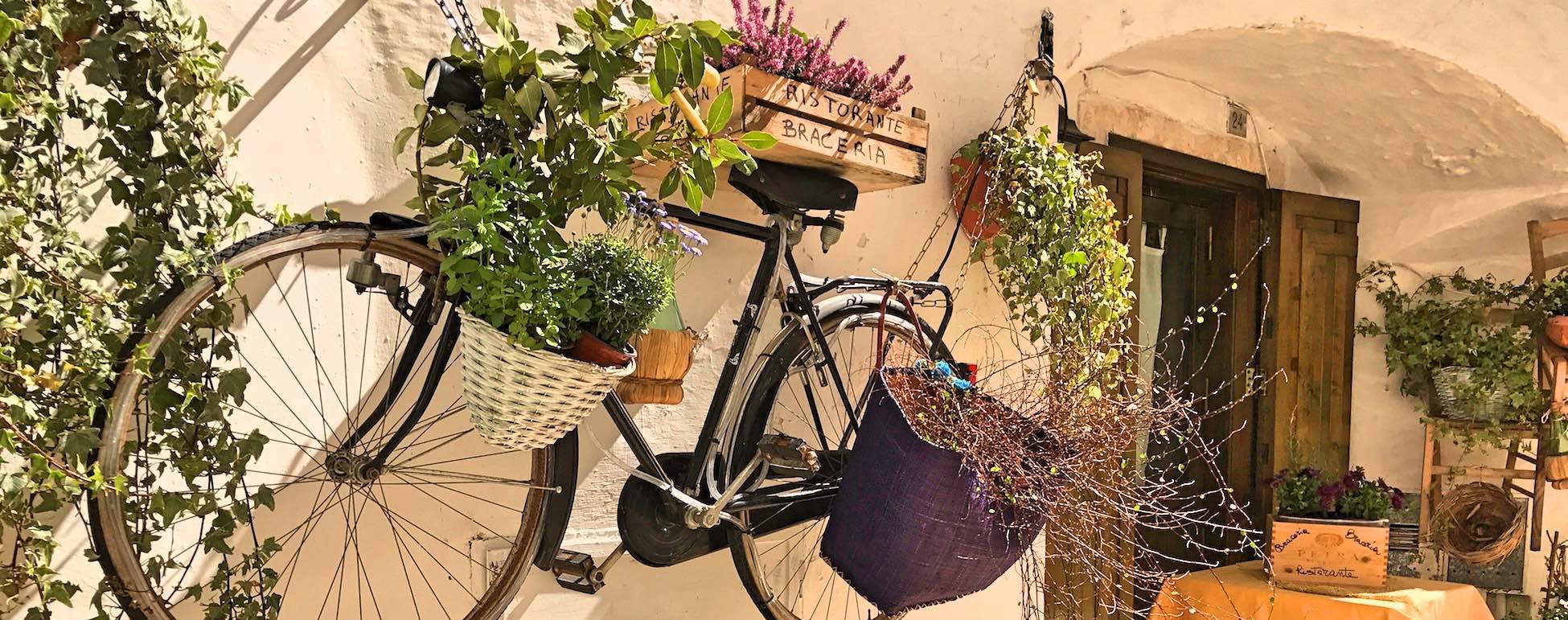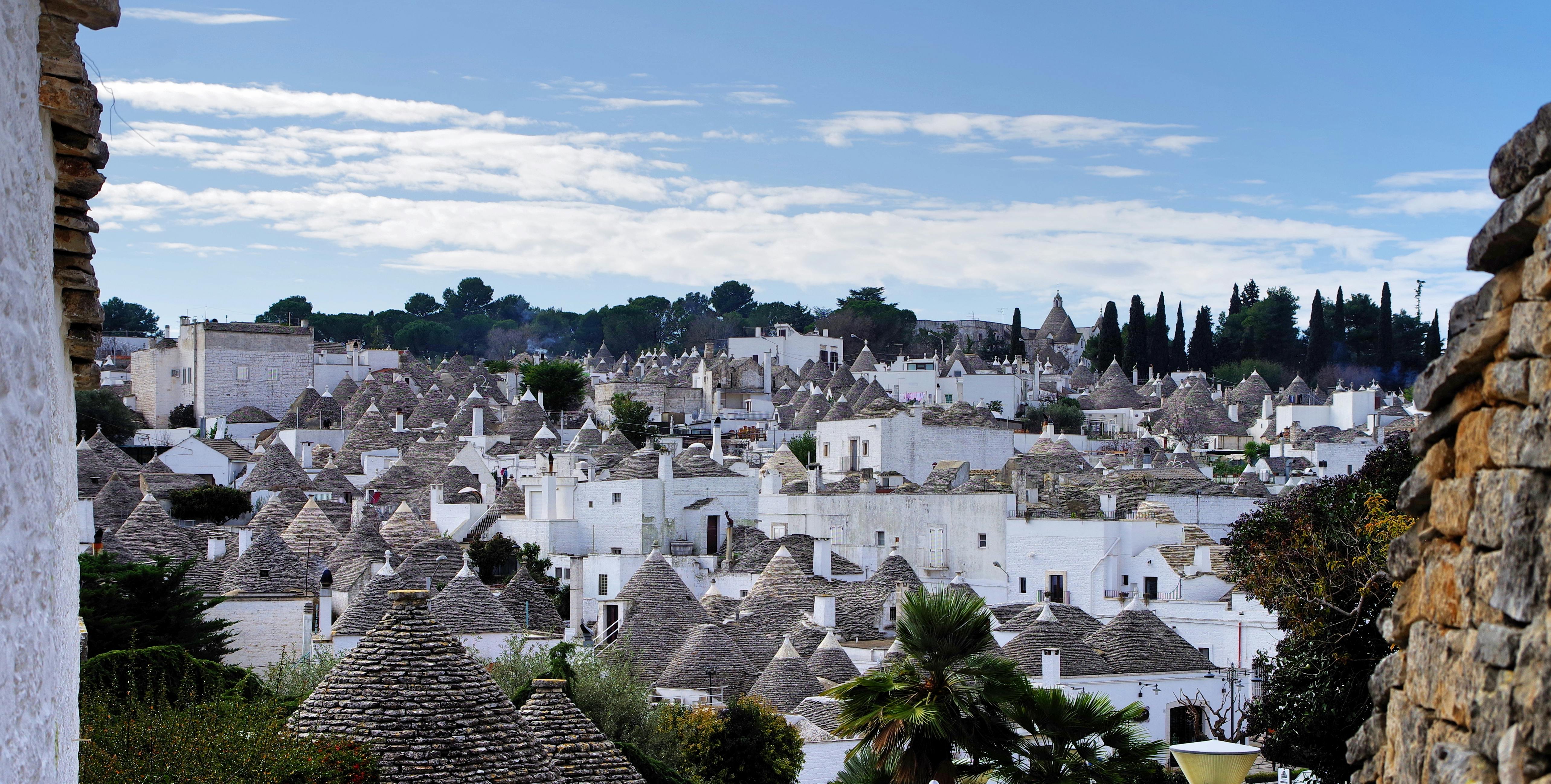The charming village of Scopello, a hamlet of Castellammare del Golfo, is located on the western coast of Sicily.
The name seems to derive from the presence of rocks on the coast, from which two wonderful stacks stand out which attract the interest of tourists from all over the world.
If these places fascinate you, you can visit Scopello with one of our tours in Sicily:
⇒Magna Via Francigena: a piedi da Palermo ad Agrigento
What to see in Scopello
Treat yourself to a regenerating walk through the streets of the enchanting historic center of Scopello which in winter is populated by just over one hundred inhabitants and immerse yourself in its evocative atmosphere surrounded by the scents of the sea.
Why not decide to spend a carefree day to discover the beauties of this fascinating village in Sicily?
If you want to spend a day in Scopello, we have prepared a list with things to see and visit in peace:
- The ancient Tonnara of Scopello
- Scopello beaches
And now let's set off together to discover the most identifying places in Scopello!

The ancient Tonnara of Scopello
The main activity of the small village of Scopello is certainly fishing, as demonstrated by the suggestive Tonnara dating back to the 13th century with its enchanting old watchtower built above the seaside village.
In this wonderful setting you can learn the history of tuna fishing and what it has meant for the island's economy. A primary activity and source of income for many families which continued until 1981.
The Tonnara was directed by a rais, the one who organized the work, decided how to position the nets and commanded the fishermen, called tonnarotti. The fishermen began their fishing trips by humming the cialoma, a propitiatory song, and took care of positioning the nets. The nets were kilometers long and were positioned to form a small island in which the tuna were trapped. When the time came to collect the catch, the boats positioned themselves around the net and began the slaughter.
Scopello beaches
Directly from the Tonnara you can access the beautiful beaches of the Scopello stacks. What makes it unique is actually the seabed, suitable for snorkeling. For those who love sinking their feet into the cool sand while relaxing in the shade while eating a snack, Giudaloca beach is truly ideal.
Another option could be Cala Mazzo di Sciacca, entirely immersed in nature and to reach it you have to take a short path.
What to do in Scopello - the Slow Active Tours proposal
Once you have discovered the wonders hidden among the streets of Scopello, the time has come to get to the heart of the sounds and smells of this ancient village.
-
Lo Zingaro Oriented Nature Reserve
The Zingaro oriented nature reserve is a 7 km long path from San Vito Lo Capo to Castellammare del Golfo. In fact, it is one of the few places in Sicily that does not have a coastal road. A choice, as the name underlines, which aims to underline and support the pleasure of the adventure linked to the discovery of this fascinating corner of Sicily.
The Reserve is built on a predominantly limestone surface, formed by a rocky coast, interspersed with numerous coves. A fantastic natural habitat where harmony reigns supreme despite the contrasts that alternate between the rock and the sea, the red earth and the white pebbles. The sea with its characteristic turquoise color houses numerous submerged caves such as the Grotta del Colombaccio which welcomes its visitors enchanted by the beauty of nature which here has paid homage to the hole of water whose incessant progress has formed elegant stalactites. The territory of the Reserve is mainly home to the characteristic dwarf palm, a very dense vegetation which occasionally gives way to the sweet scents of rosemary, almond and myrtle. But here there is also space for the splendid colors of orchids and sweet Sicilian cornflowers. From above a multitude of birds of prey populate the area. Among these, the most fascinating is Bonelli's Eagle, enchanting trajectories among the blue Sicilian sky. The Reserve also houses the Museum of Maritime Activities, Rural Civilization, Weaving, Manna and the Naturalistic Museum. An evocative and enchanting place that preserves the ancient memory of the local heritage, both material and immaterial, made up of ancient knowledge and age-old tradition. An exceptional beauty silently guarded by Monte Cofano, which majestic and imposing is a silent guardian of this priceless wealth. -
Segesta Archeological Park
The ancient center of Segesta was one of the main centers of the Elymians, the legendary people of Trojan origin who together with the Sicels and Sicans inhabited Sicily. The city immediately experienced a process of Hellenization, finding the support of Athens and Carthage which guaranteed its development and prosperity. Following the upheavals of the Punic Wars, Segesta passed under Roman rule which, by virtue of its common Trojan origin, exempted it from the heavy taxation that the Sicilian cities that supported Carthage had to suffer. This allowed the flourishing town to continue to develop until it was destroyed by the Vandals in the 5th century without ever returning to its ancient splendors despite the reconstruction works. In fact, the construction of a Muslim village with a mosque can be attributed to this period, followed by a Norman - Swabian settlement with a castle and a church dating back to 1442. There where the activity of the inhabitants of Segesta once flourished, on the top of Mount Barbaro, today stands the Archaeological Park within which it is possible to admire a Sicilian Doric temple, the fortifications of the city and a magnificent Theater dating back to the second half of the 2nd century BC. The Temple unfortunately remained unfinished, most likely due to the invasion of the Vandals in the 5th century BC According to other hypotheses, however, it is believed that it was not intended for a Greek cult, and this would explain its unique construction among Hellenic times. Scholars do not agree on the identification of the divinity to which it was dedicated, although the structure follows the architectural canons of the time in Sicily. Thanks to the findings exhibited in the Archaeological Park, we know that ancient Segesta was equipped with a lower defensive wall which served to block possible attacks coming from the western side of the mountain. On this structure there was an opening consisting of an urban gate, Porta di Valle, which was equipped with towers but which was closed after the creation of the middle wall. The main gate, Porta Stazzo, was controlled by a fortified bastion which in modern times was transformed into a sheepfold.
-
Magna Via Francigena: Walking from Palermo to Agrigento
Slow Active Tours offers an exciting and intriguing walking journey to discover the hidden beauties of Sicily from north to south, from the Tyrrhenian Sea to the Mediterranean Sea.
Festivals and popular celebration in Scopello and Castellammare del Golfo
Scopello is a fraction of Castellammare del Golfo, we have prepared a list with the events of Castellammare. On May 19th the Feast of Santa Rita is celebrated together with a very exciting and evocative historical re-enactment. For the occasion, the streets of the town are colored with figures from all over Italy, flag-wavers, knights and nobles wearing clothes from the saint's era. On 13 July, every other year, a spectacular historical re-enactment of an event that characterized the coast of Castellammare del Golfo is celebrated. In particular, the events that occurred in 1719 are recalled when a Spanish ship, chased by English fleets, sought shelter under the Castle of Castellammare. This triggered a fierce battle in which the local inhabitants emerged victorious and thanked the Virgin Mary. From 19 to 21 August, however, the celebrations of Maria SS. Del Soccorso, Patron Saint of Castellammare del Golfo. Particularly evocative and full of charm is the procession at sea, during which the Simulacrum of the Virgin is carried on the shoulders by representatives of the sailors.
Typical dishes of Scopello
Scopello's cunzatu bread is undoubtedly a synthesis of the flavors that can be found in this ancient fishing village. The essential elements of this tasty homemade seasoned bread are above all the anchovies seasoned with the tasty local olive oil and tomatoes. To this are added other typical local specialties such as primosale or other locally produced cheeses. If you are looking for a sweeter taste, you should definitely try the local cassatella. This tasty dessert was born in the 18th century in Catalafimi, a few kilometers from here, but it is in Scopello that it can be found in the version with ricotta or pistachio. Casstella was originally prepared for the Easter holidays, but today it is easier to find it at any time of the year. We suggest you enjoy it hot in the coldest months for a truly unique sensation!
Eating and Drinking in Scopello
Here are some suggestions from the area:
La Terrazza Restaurant in Marco Polo street, 5. Suggestive location with a view of the Scopello stacks.
Nettuno Bar Restaurant in Royal Bourbon Site. Sicilian-style pasta, meat and fish served in a shaded paved courtyard with sea and mountain views.
So what are you waiting for? Get your stuff ready and off you go!





